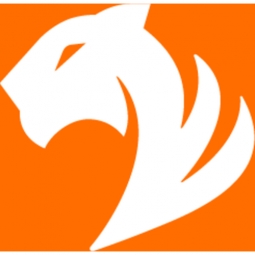Download PDF
Major Financial Institution Enhances Anti-Money Laundering Capabilities with TigerGraph

Technology Category
- Analytics & Modeling - Machine Learning
- Cybersecurity & Privacy - Identity & Authentication Management
Applicable Industries
- Finance & Insurance
Use Cases
- Fraud Detection
Services
- System Integration
The Challenge
The financial institution, one of the largest in the United States, was seeking to enhance its networking and link analysis capabilities for anti-money laundering. The institution wanted to identify connections between open work items in situations of interest, such as previous SAR filings and other open work items, and make this information available to analysts and investigators. They also wanted to conduct thorough ad hoc reviews of an entity, displaying the connections from an ecosystem surrounding a specific starting point of an investigation. Furthermore, the system should enable analysts to identify which connections and situations of interest lead to productive investigations and inform the creation, hibernation, or escalation of work items. The company was in search of a solution that offered a client-focused approach, state-of-art technology, and a next-generation database management solution that integrated seamlessly with its existing workflow.
The Customer
Major Bank
About The Customer
The customer is a major financial institution that provides banking, investment, mortgage, trust, and payment services products to individuals, businesses, governmental entities, and other financial institutions. It is one of the largest banking institutions in the United States, with over 3,000 branches, primarily in the Western and Midwestern United States. The company has subsidiaries that include a processor of credit card transactions for merchants and a credit card issuer that issues credit card products to financial institutions.
The Solution
The financial institution chose TigerGraph to improve its anti-money laundering capabilities. TigerGraph provided the institution with the ability to perform in-depth analysis that was impossible with its prior legacy system based on a relational database. TigerGraph offered the capability for the business to see its connected data in context. Moreover, TigerGraph delivered the scalability to analyze ever-increasing amounts of data and an extensibility derived from its support for machine learning that keeps the bank’s anti-money laundering program ahead of financial criminals. The institution deployed TigerGraph on AWS, resulting in a scalable, high-performance system that allowed them to quickly deliver real-time insights into complex relationship-based workflows common in tasks such as credit scoring, fraud detection, recommendation engines, and risk analysis.
Operational Impact
Related Case Studies.

Case Study
Real-time In-vehicle Monitoring
The telematic solution provides this vital premium-adjusting information. The solution also helps detect and deter vehicle or trailer theft – as soon as a theft occurs, monitoring personnel can alert the appropriate authorities, providing an exact location.“With more and more insurance companies and major fleet operators interested in monitoring driver behaviour on the grounds of road safety, efficient logistics and costs, the market for this type of device and associated e-business services is growing rapidly within Italy and the rest of Europe,” says Franco.“The insurance companies are especially interested in the pay-per-use and pay-as-you-drive applications while other organisations employ the technology for road user charging.”“One million vehicles in Italy currently carry such devices and forecasts indicate that the European market will increase tenfold by 2014.However, for our technology to work effectively, we needed a highly reliable wireless data network to carry the information between the vehicles and monitoring stations.”

Case Study
Safety First with Folksam
The competitiveness of the car insurance market is driving UBI growth as a means for insurance companies to differentiate their customer propositions as well as improving operational efficiency. An insurance model - usage-based insurance ("UBI") - offers possibilities for insurers to do more efficient market segmentation and accurate risk assessment and pricing. Insurers require an IoT solution for the purpose of data collection and performance analysis

Case Study
Smooth Transition to Energy Savings
The building was equipped with four end-of-life Trane water cooled chillers, located in the basement. Johnson Controls installed four York water cooled centrifugal chillers with unit mounted variable speed drives and a total installed cooling capacity of 6,8 MW. Each chiller has a capacity of 1,6 MW (variable to 1.9MW depending upon condenser water temperatures). Johnson Controls needed to design the equipment in such way that it would fit the dimensional constraints of the existing plant area and plant access route but also the specific performance requirements of the client. Morgan Stanley required the chiller plant to match the building load profile, turn down to match the low load requirement when needed and provide an improvement in the Energy Efficiency Ratio across the entire operating range. Other requirements were a reduction in the chiller noise level to improve the working environment in the plant room and a wide operating envelope coupled with intelligent controls to allow possible variation in both flow rate and temperature. The latter was needed to leverage increased capacity from a reduced number of machines during the different installation phases and allow future enhancement to a variable primary flow system.

Case Study
Automated Pallet Labeling Solution for SPR Packaging
SPR Packaging, an American supplier of packaging solutions, was in search of an automated pallet labeling solution that could meet their immediate and future needs. They aimed to equip their lines with automatic printer applicators, but also required a solution that could interface with their accounting software. The challenge was to find a system that could read a 2D code on pallets at the stretch wrapper, track the pallet, and flag any pallets with unread barcodes for inspection. The pallets could be single or double stacked, and the system needed to be able to differentiate between the two. SPR Packaging sought a system integrator with extensive experience in advanced printing and tracking solutions to provide a complete traceability system.

Case Study
Transforming insurance pricing while improving driver safety
The Internet of Things (IoT) is revolutionizing the car insurance industry on a scale not seen since the introduction of the car itself. For decades, premiums have been calculated using proxy-based risk assessment models and historical data. Today, a growing number of innovative companies such as Quebec-based Industrielle Alliance are moving to usage-based insurance (UBI) models, driven by the advancement of telematics technologies and smart tracking devices.

Case Study
MasterCard Improves Customer Experience Through Self-Service Data Prep
Derek Madison, Leader of Business Financial Support at MasterCard, oversees the validation of transactions and cash between two systems, whether they’re MasterCard owned or not. He was charged with identifying new ways to increase efficiency and improve MasterCard processes. At the outset, the 13-person team had to manually reconcile system interfaces using reports that resided on the company’s mainframe. Their first order of business each day was to print 20-30 individual, multi-page reports. Using a ruler to keep their place within each report, they would then hand-key the relevant data, line by line, into Excel for validation. “We’re talking about a task that took 40-80 hours each week,” recalls Madison, “As a growing company with rapidly expanding product offerings, we had to find a better way to prepare this data for analysis.”





